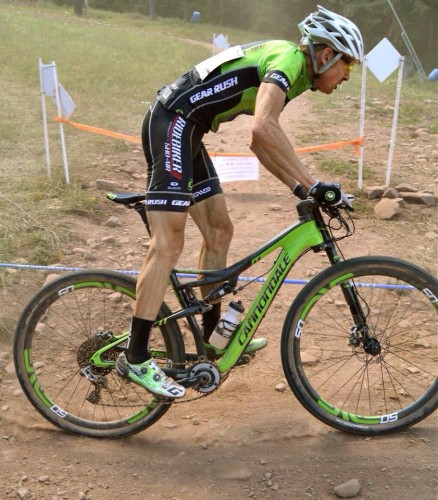Question: I want to start training and racing with a power meter on my mountain bike. What do you recommend for a power meter and how do I establish my training zones using the power meter? Will I need a separate power meter for my road bike if I train on both, especially since my road bike will be my ‘trainer bike’ for the winter?
Answer: Planning and pacing your training with a power meter is a huge advantage. There are many power meters on the market. Read through DC Rainmakers 2015 power meter buyers guide for a detailed review of every known option. Not all of these power meters work for mountain bikes due to compatibility or durability issues. We need a power meter that can take a beating. The most popular mountain bike power meters with proven durability off-road are Stages, PowerTap Hub, SRM and Power2Max. One of the new products on the market is the 4iiii’s power meter however they currently support aluminum cranks only so anybody with carbon cranks is out of luck.
It is possible to have one power meter that you move back and forth between bikes but it is inconvenient to switch these often. The power meters are located in the crank arms (Stages, SRM and Power2Max) or rear wheel (PowerTap hub). If these parts are compatible between your MTB and road bike you can do the switch with a little wrenching to change the crank or rear wheel.

You’ll find most MTB pros like Alex Grant train and race with power meters. Here Alex digs deep at the Mount St. Anne world cup
If you are adding a power meter to only one bike, the bike to choose is the one you ride the most. This will maximize the use you get out of the power meter. If this is equal, put it on your mountain bike. The best option is to have a power meter on every bike.
Once you have your power meter installed, read the manual to understand the calibration and zeroing requirements. Some power meters will auto zero and/or calibrate and others you need to do manually before each ride to maintain accuracy.
To establish your power training levels, warm up very well then do a 20 min all-out, non-stop time trial effort on a flat road or up a continuous gradual climb. Enter your average 20 min power from this time trial to our LW Coaching Power Level and Heart Rate Training Zone Calculator to calculate your power training levels.
Now you are ready to start pedaling in watts and producing TSS (Training Stress Score).
Lynda Wallenfels is a Category 1 certified USA Cycling coach. She coaches mountain bike, cross country and endurance athletes to personal bests and national championships. Lynda has been coaching off-road athletes and racing for 20 years. Contact her through her website for information on mountain bike training plans, coaching and consulting at LWCoaching.com.









